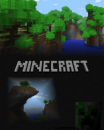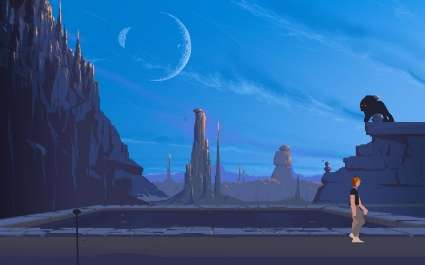From Wired
http://www.wired.com/gamelife/2010/01/npd-analysis-how-to-sell-a-wii-game/
*******************************************************************
Analyst Jesse Divnich of EEDAR, in a note on Thursday, made what I think is the most cogent, cohesive argument about this situation that I’ve seen yet:
All too often the economy is blamed for the recent industry contraction. In reality, decreased sales in 2009 had more to do with a lack of innovation than economic recession. The growth of our industry now rests more on innovation than it ever has before, especially since non-traditional and casual markets consist of a larger share than in previous years. No longer can developers update a few maps, design some new weapons, add a few new characters, then throw a roman numeral at the end of the box and call it a “sequel”. That may work for core targeted games (Action, Shooters, and RPGs), but this strategy is not ideal for non-traditional and casual gamers.
Case in point: most sequels targeted to the mainstream and casual markets actually underperform in comparison to the original, which is the opposite to what has traditionally been the case for core targeted games. If you examine the Nintendo Wii and DS platforms (the current primary platform for this audience) Boom Blox outsold Boom Blox 2 (Wii); Brain Age outsold Brain Age 2 (DS); Guitar Hero III bested World Tour (Wii); The Bigs crushed The Bigs 2 (Wii); Mario & Sonic at the Olympics (Wii) is on track to outperform its Winter counterpart; Rayman Raving Rabbids (Wii) (2006) outsold its 2007 release; and lastly the original Cooking Mama(Wii, DS) (2006) has out sold all sequel versions combined.
EEDAR believes Nintendo understands the mindset of its consumers the best, which is why Nintendo rarely releases sequels within the same generation and, if they do, they are years apart. A good example of this is Mario Kart. Instead of releasing an annual Mario Kart title, Nintendo opts to only release one Mario Kart per hardware generation. Traditional thinking would assume that after an initial sales bump Mario Kart would simply just fade away on retail shelves—as so many others do. However, Nintendo realizes that if you can get an initial attachment rate on Mario Kart of 25% in 2008, they should be able to get the same attachment for new Wii purchasers in 2009 without having to release a sequel. To no surprise, the attachment rate for Mario Kart in 2009 was identical to that of 2008. Another example is Wii Fit. Whilst Nintendo did release a sequel to Wii Fit, The Wii Fit Plus (2009), the overwhelming majority of sales did not come from the stand-alone software edition, but rather the hardware/software bundle of the Wii Fit Plus. In other words the release of the expansion, which likely had minimal development costs, spurred sales of a 20 month old game wrapped in new packaging.
Of course this rule is not absolute for all casual and mainstream titles, some sequels do outperform the original, but in the overwhelming majority of cases, sequels on the Wii just cannibalize the potential sales of its predecessor. For reference, if the above examples were not proof enough, Call of Duty: World at War (2008) only outsold Call of Duty 3 by the smallest of margins and the most recent Call of Duty Modern Warfare: Reflex (2009) is currently on track to under-perform against World at War.
With the Wii making up the majority of the current casual and mainstream audience this finding should be carefully observed as Sony and Microsoft attempt to become more competitive in this space in future years.
So all you have to do is not release sequels? Unfortunately, it’s not that easy: All you have to do is nail it the first time. That’s harder. And unfortunately, this is not what many software makers seemed to be doing when they first approached Wii. Instead, the idea seemed to be: spend a little bit of money, make something barely acceptable — because screw ‘em, right, they’re casual gamers, they’ll play any old thing! — then follow up with a more polished sequel if it takes off.
Meanwhile, Nintendo keeps producing what are, by miles and miles, the most highly polished games on Wii. Third parties might not be able to have six million-sellers in a single month, it’s true. And, from where I’m standing, even great games like Boom Blox aren’t racking up the sales they deserve. But Divnich makes a compelling point: If software makers are not following the Nintendo-style model, they have very little room to complain that they’re not seeing Nintendo-style results.
**************************************************************
Summary: Krebs just got back from the war. He had trouble readjusting to his old life.
I found this while doing my google news rounds and it raises a lot of interesting questions. I think one of the main themes of this generation has been a lack of innovation. There's a been a whole lot of "same game, different number" and this NPD analysis points out that with the Wii audience that method of game making just doesn't cut it. It's also a funny if backhanded way of saying HD console consumers are far more forgiving of flaws in their tastes and essentially being exploited as cash cows since they can be sold the same thing over and over again.
More interesting to me are the implications regarding the future of gaming. Somewhere in Malstrom's sea of babbling I remember reading something about how new companies adopting the new model will swim upstream and replace the old guard, essentially wiping them out and transforming the industry. It sort of seemed like a far fetched idea to me, but the excessive sequelitis this generation and this article clicking was that 2 and 2 I needed to see that this is a distinct possibility.
I'm mostly curious what you think about this generation's sequelitis and how it compares to previous generations. Also, is this something that could become a major problem for the whole video game industry?
3rd Party Wall of Shame
http://www.nintendoworldreport.com/forums/index.php?topic=30478.msg581036#msg581036
























































